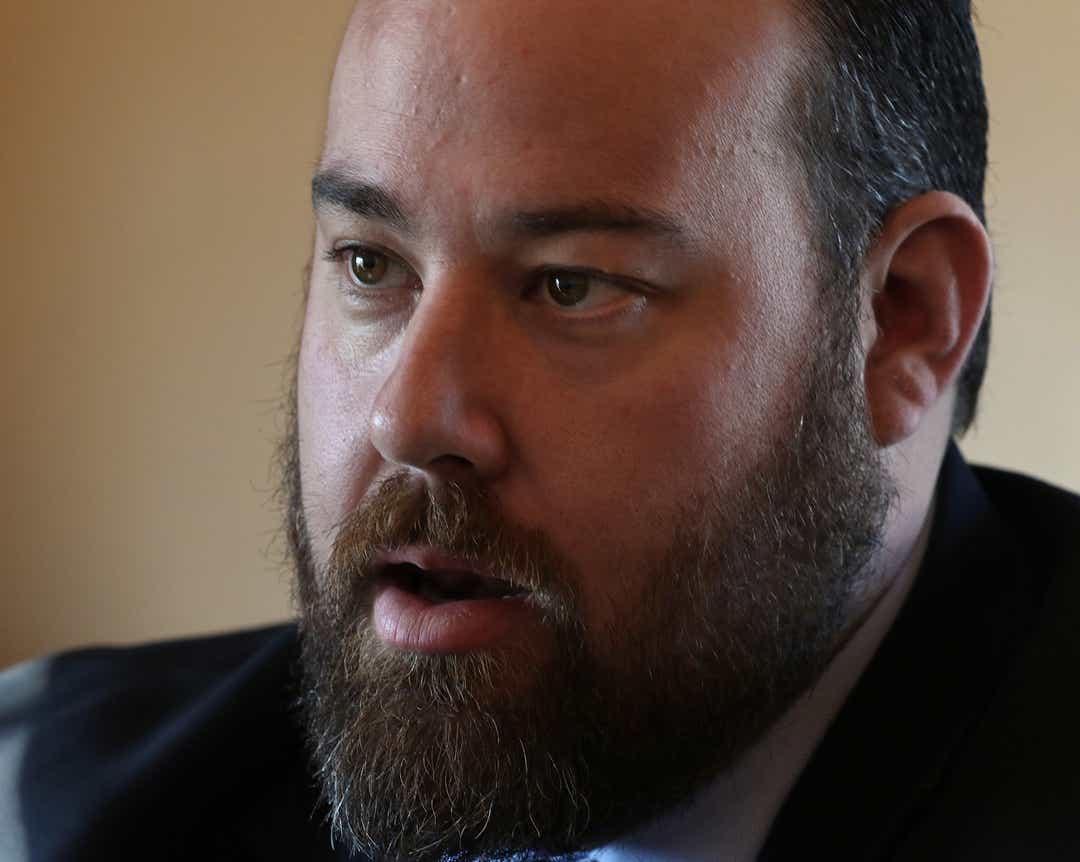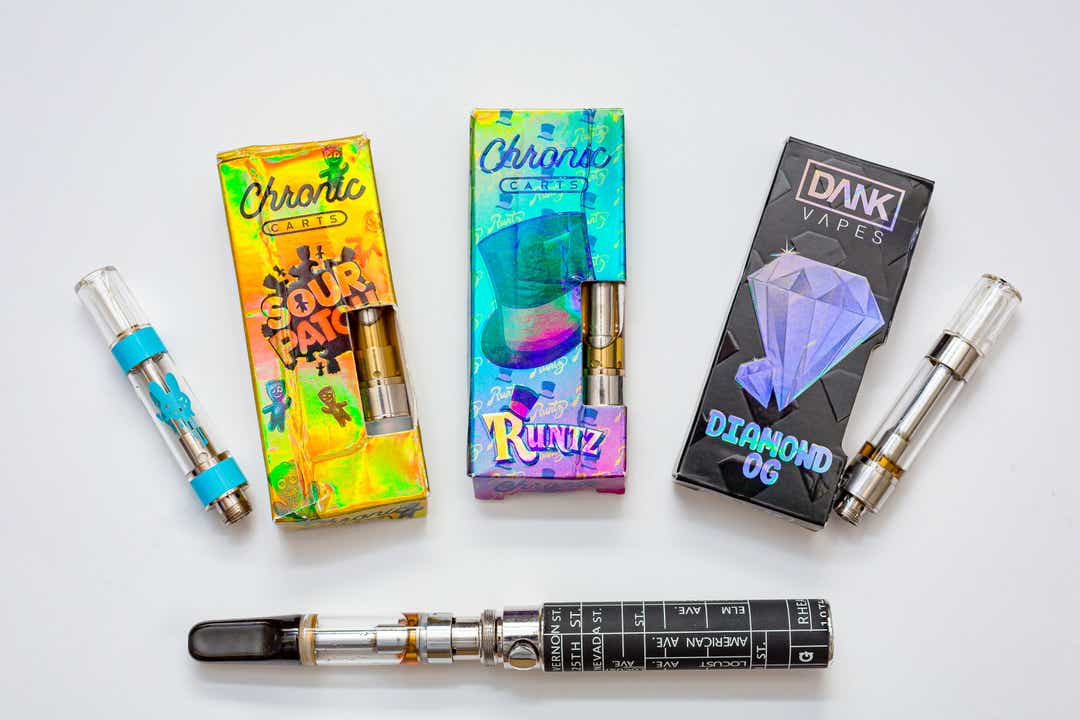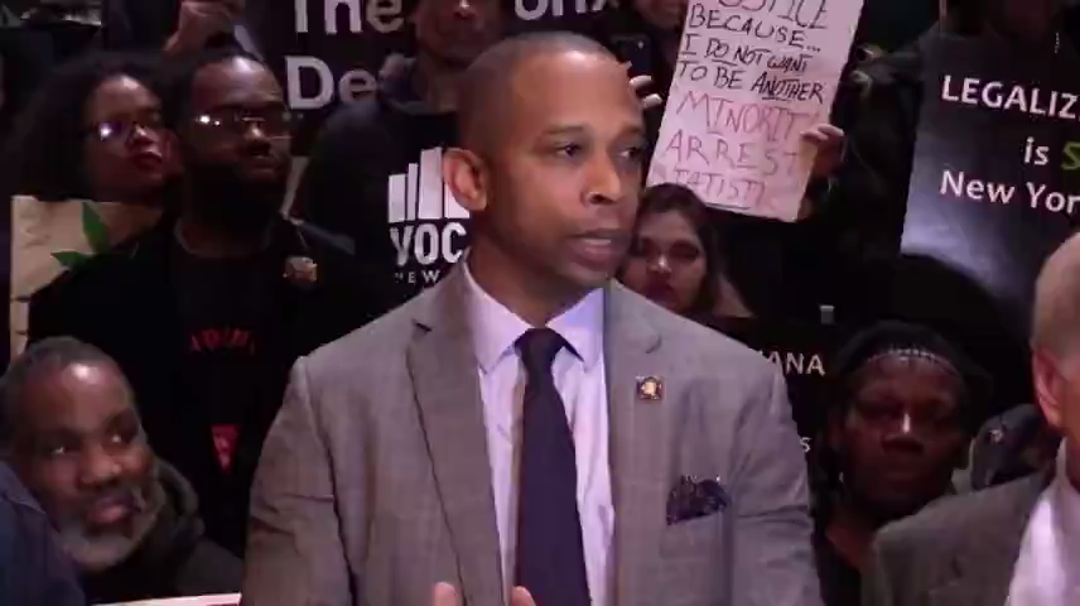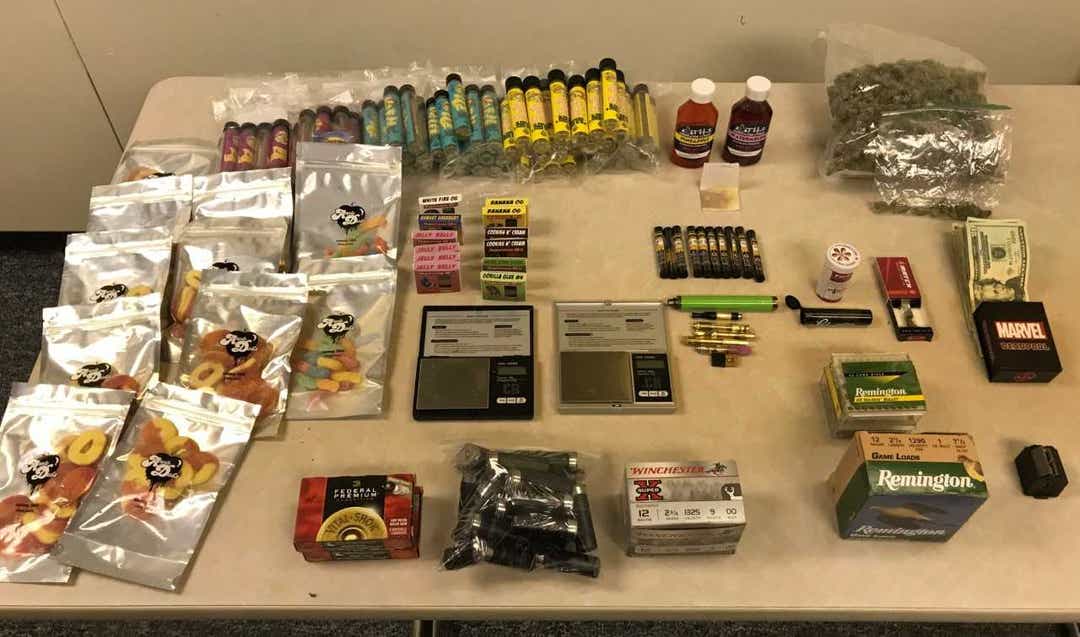Norman Birenbaum, the new cannabis policy guru for Gov. Andrew Cuomo, described legalizing recreational marijuana in New York as a moral imperative.
“This is the right thing to do for public health and public safety,” Birenbaum said in a USA TODAY Network New York interview.
“The reality of the situation is we have adult-use cannabis today,” he added. „The problem is it’s not regulated, and it is provided through the illicit market.”
But if the embattled legal weed push succeeds this year, Birenbaum envisions replacing black-market pot with a tightly regulated marijuana industry that helps offset the racially biased war on drugs.
It is a stance in part forged during his last job leading Rhode Island’s medical marijuana program. He joined Cuomo’s administration in December.
His job will be to oversee the state Office of Cannabis Management that would issue licenses for producers, distributors and retailers. It would also oversee the state’s medical marijuana and hemp industries.
Birenbaum’s role will be to implement whatever law is passed by the state Legislature and signed by Gov. Andrew Cuomo. The sides are hopeful to have a deal as part of the state budget due by April 1.

So Birenbaum’s viewpoint is insightful for a Cuomo administration that has increasingly moved more comfortable with legalizing marijuana. When Cuomo took office in 2011, he did not support it, but in recent years has changed his stance as other states have made pot legal, including neighboring Massachusetts.
In the interview, Birenbaum, 32, who holds a bachelor’s degree in political science from Boston College, addressed the generational implications of the debate and opposition from some health officials, parents and law enforcement.
Birenbaum also disputed some dire warnings from both sides of the legal weed divide, citing examples from the 11 states that already allow recreational sales to adults over 21. Cuomo said he plans to visit some of those states next month.
“You get people saying, ‘This is a plant that is a gift from above and there is absolutely no harm whatsoever and it should not be regulated,” Birenbaum said.
“That’s not necessarily right because there are real public health and safety concerns.”
“And the other people say ‘It will be the downfall of modern civilization, and we have just not seen that happen in these other states,” he added.
The discussion spanned plans for protecting workers from secondhand legal weed smoke and limiting accidental pot-edible overdoses to keeping drugs away from kids and spending cannabis tax revenues on social equity.
It has been edited for space and clarity.
What do you say to opposition concerns about legal marijuana health risks?
To think that legalizing adult use will suddenly flip a switch that hasn’t been flipped for the last 30 or 40 years I think is short sighted. I think it’s a bit ignorant.
We need to reconcile with the fact that prohibition does not work. It never has worked.
And there have been very, very large externalities that have come from prohibition when it comes to how it was enforced, and there were communities that were destroyed.
And from a strictly public health and public safety standpoint, if consumer behavior is not changing we need to do everything we can to understand it and study it and make sure that we’re mitigating against the public-health risk.
More: New York marijuana: 5 reasons why the legal weed industry is excluding communities of color
How does legalization address vaping-related illnesses linked to marijuana?
The overwhelming majority of those products which were contributing to and causing (vaping-related illness) were illicit THC products.
What we can do is say ‘If you’re going to use these products, we can makes sure they don’t contain vitamin E acetate…or a flavorant which may be fine to consume if you’re eating it, but when it goes through vaporization or aerosolization can be potentially dangerous.
Taking a head in the sand – if we pretend it’s not there, it’s not there – approach does not work.

It’s also clear through the recent nicotine-vaping crisis you’re now seeing a rash of laws and seeing a regulated framework coming into place.
We haven’t had a regulated framework for cannabis in this state ever, and mostly across the country.
And it’s time that we do that because it’s the responsible thing to do to safeguard public health and safety.
More: Legalizing marijuana in New York: How it hinges on how money goes to communities of color
How do neighboring states’ marijuana laws impact the debate?
Right over the border in New Jersey they will be voting on this in November.
All indications show that vote will pass, it will be legalized. When you look at how it’s polling, and look at where it is in the country, these ballot initiatives are overwhelmingly popular.
Only two have failed. One by a very thin margin in Arizona, which is a pretty red state. And another in Ohio that was largely because it was drafted in a way that it would have only benefited a small handful of businesses.
Understanding that it is a virtual foregone conclusion that this will be right over the border, I think we need to ask ourselves: Do we want New York residents going to a neighboring jurisdiction?
What are other legal weed states seeing in terms of health concerns?

Because of early missteps in other states, we now have packaging and labeling standards…so that people have an understanding of what they’re putting into their bodies.
What we’ve seen in other states is actually positive indicators, especially around youth use and public education campaigns.
We have the healthiest generation of kids in this nation’s history when it comes to alcohol and tobacco consumption, but when you look at cannabis use it has stayed the same when alcohol and tobacco use is dropping.
So, we don’t have the same type of regulated framework to make sure we’re educating kids about cannabis, and to make sure that the people who are operating in the industry aren’t targeting them and are acting responsibly.
More: New York marijuana: 7 things to know about Gov. Cuomo’s bill to legalize recreational pot
How does New York make social equity work after other states failed?
A lot of early states would acknowledge the political atmosphere around this issue was just pass legalization and pass it by any and all means necessary.
That led to a disregard for communities that have been disproportionately harmed by prohibition and the war on drugs.
And so, the governor has been very, very clear that this is a foundational component of legalization in New York.
How do social equity applicants compete with big cannabis companies?

It’s about tools in (Cuomo’s bill) to give geographic preference to social and economic equity licenses, because we understand the market in Rochester is different than the market in Manhattan.
We understand there is inherent value in certain places, and we want that value and that stability that comes with that to go to social and economic equity applicants.
Being able to issue zero- to low-interest loans to social equity applicants is something we kept in there from last year.
We understand that access to a license is nothing if you don’t have access to the capital required to build it, and implement it, and run it in a way that is going to be prosperous.
More: New York marijuana: What to know about decriminalization, criminal records, pot possession
What about calls for spending specific percentages of tax revenue on social equity?
Adequate resources are important, so is flexibility.
Local community impact grants in Cuomo’s plan, for example, is restorative justice, and it is being able to make investment in the communities that exist outside of the cannabis industry.
Because these communities need help and investment and resources, and not all of them want to engage in the cannabis industry and it can be a volatile industry.
But we also need to have the flexibility to be able to use the information that we gather to be able to work with community partners and stakeholders to help inform how the spending should be allocated.
More: NY wants to ban flavored e-cigarette products. Here’s the latest.
How does New York’s approach to marijuana taxes compare to other states?
Other states had a value-based tax that was either put on at whole sale or retail, but you didn’t have any weight-based or potency or THC-based tax rate.
There were no price mechanisms in terms of ensuring of minimum value and stability of market. And that’s really important because this is an agricultural commodity.
In states like Oregon you had over supply and dramatic price decreases to a point where you had businesses going out of business and you had large incentives for them to divert out of state.
How does New York prevent black-market pot from undercutting legal weed?

Our illicit market is not one based off growing and production. It’s more based on distribution and delivery service.
So, we can fulfill that need by having locally grown and locally produced products that are safe and regulated to fulfill that market demand.
Other states have other reasons.
California, for example, has seen over a half century of just large scale, unregulated growing and supply to the point where they export to the rest of the country.
In Oregon, it’s that they produced so much more cannabis than they need. They could stop producing it right now and still have enough cannabis to provide every man, woman and child with, I think, six pounds.
But that’s a function of not having the foresight of putting in market-based limitation on production.
More: NY vaping: AG appeals judge’s order that struck down emergency e-cigarette flavor ban
What will stop the out-of-state smuggling of illicit pot into New York?
People now obtain from the illicit market because we don’t have a regulated market for them, but we’ve seen this transition in legal states.
So, if you have someone who is engaged in a large-scale sophisticated (illicit marijuana) delivery service here now, it’s making sure that they have an opportunity to come in and do it the right way that is a regulated and taxed by the state.
It’s not just about displacing the illicit market. It’s also about absorbing these entrepreneurs that have small businesses, be it operating illegally, and that is part of the social justice initiative of this bill.
What can New Yorkers expect if legal marijuana use cafes are approved?
This is not yet established in other states. We’re starting to see it in Alaska and Massachusetts, and municipalities like Denver and others in California.
We need to create a safe space where consumers can use products when the alternative would be on the street, which is something we don’t want to see, or putting their housing in jeopardy, particularly looking at federally subsidized housing.
We need it to be a controlled atmosphere where we’re able to educate consumers to make sure the products are safe, the environment is safe.
What’s your response to the new AAA report raising concerns that more Americans are getting high before driving?
The governor has a comprehensive road safety approach to make sure that we can, as best as we can, create parity between enforcement of impaired driving, whether that’s under the use of alcohol, opioids, cannabis or other substances.
For example, right now if you refuse to undergo a breathalyzer test for alcohol impairment there‘s an automatic administrative suspension of your driver’s licenses.
We proposed the same thing for cannabis if you refuse to undergo an evaluation from a drug recognition expert.
And the same penalties for having an open container of alcohol in a moving vehicle have been put in place for open containers and use in a vehicle of cannabis.
More: Health experts fear more stoned drivers are taking the wheel following pot legalization
What is the impact of the effort to legalize marijuana at the federal level?
The SAFE Act to address (cannabis industry) banking would certainly be more than helpful.
When the cannabis industry is forced to be a cash industry, that just makes it more expensive and more dangerous for both the states that are administering these programs, but also the licensees and the communities where they operate.
David Robinson is the state health care reporter for the USA TODAY Network New York. He can be reached at drobinson@gannett.com and followed on Twitter: @DrobinsonLoHud
Support local journalism
We cover the stories from the New York State Capitol and across New York that matter most to you and your family. Please consider supporting our efforts with a subscription to the New York publication nearest you. Check out the latest offer.